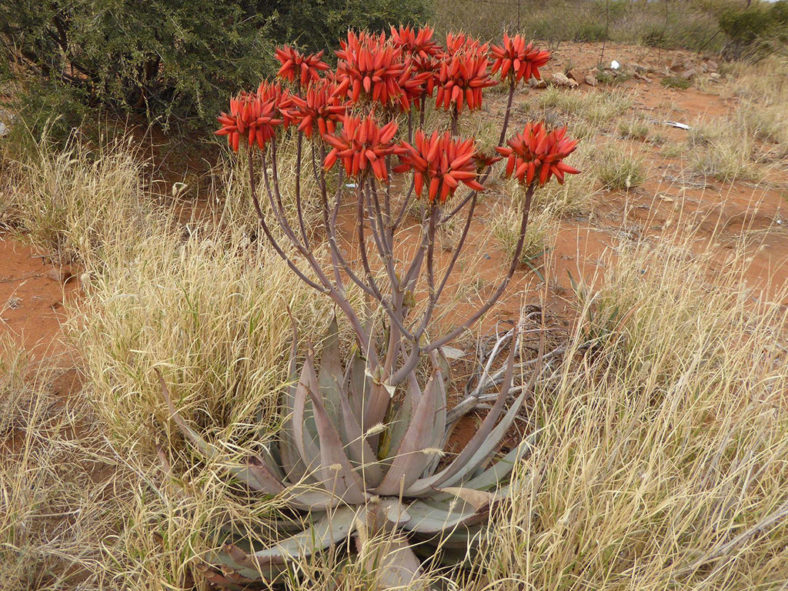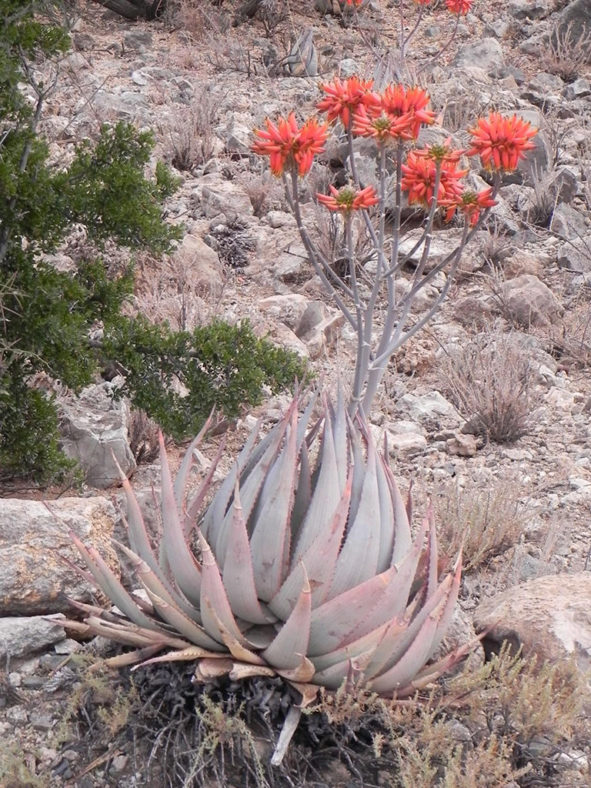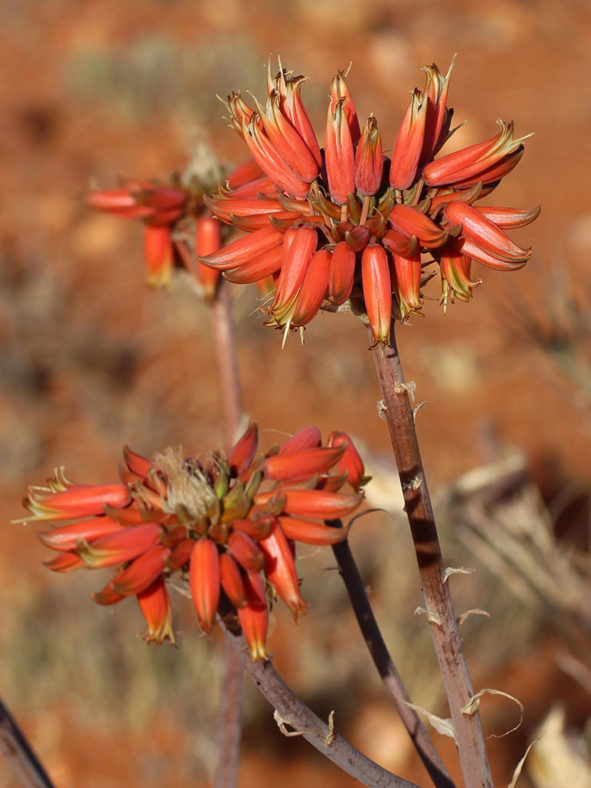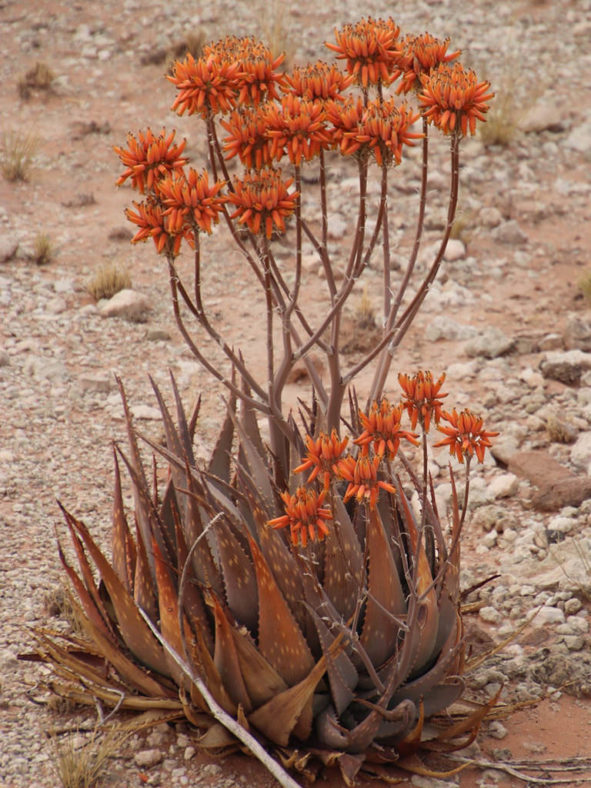Scientific Name
Aloe hereroensis Engl.
Common Name(s)
Sand Aloe
Synonym(s)
Aloe hereroensis var. hereroensis
Scientific Classification
Family: Asphodelaceae
Subfamily: Asphodeloideae
Genus: Aloe
Etymology
The specific epithet "hereroensis (her-er-oh-EN-sis)" refers to the location of the original collection in Northern Namibia that was home to the Herero people, a Bantu ethnic group inhabiting parts of Southern Africa. In their language, the common name for the plant is "sandaalwyn," meaning "sand aloe."
Origin
Aloe hereroensis is native to Angola, Namibia, and South Africa (Northern Cape and Free State). It occurs in flat, sandy or stony places or sometimes on rocky slopes.
Description
Aloe hereroensis is a succulent plant that forms dense rosettes of grey-green, blue-green, or reddish-brown leaves. The rosettes are stemless or have very short stems and grow usually solitary or suckering to form a clump of a few rosettes with age. The leaves are obscurely lined, usually without spots on the upper surface and with whitish spots scattered or arranged in transverse bands on the lower surface. They are erect, ovate–lanceolate, curving inwards, measuring up to 16 inches (40 cm) long and 3.6 inches (9 cm) wide. The leaf margins are armed with deltoid, red-brown, cartilaginous teeth.
The flowers are usually scarlet to deep red, almost magenta, rarely yellow, and appear in dense clusters on 1 to 3 erect, up to 12-branched inflorescences that can grow about 3.3 feet (1 m) tall. They can grow up to 14 inches (35 cm) long and 0.35 inches (0.9 cm) in diameter, narrowing slightly toward the mouth, and appear from winter to early spring. The fruits are ovoid, contain black seeds with broad white wings, and can grow about 1 inch (2.5 cm) long and 0.35 inches (0.9 cm) in diameter capsules.

How to Grow and Care for Aloe hereroensis
Light: When growing A. hereroensis indoors, place your plant in a window with plenty of bright indirect sunlight. Rotate the pot once or twice a week so that all sides of the plant receive equal lighting. Outdoors provide light shade, especially during the hottest parts of the day.
Soil: Plant A. hereroensis in a well-drained soil mix formulated for succulents or make your own. Drainage is essential because too much moisture around roots can cause root rot.
Temperature: This succulent grows at its best at temperatures between 50 to 85 °F (10 to 30 °C). When temperatures shift below 50 °F (10 °C), it is time to bring your plant back inside. A. hereroensis can withstand temperatures as low as 25 °F (-3.9 °C). USDA Plant Hardiness Zones 9b to 11b, 25 to 50 °F (-3.9 to 10 °C).
Watering: This succulent does need regular watering but is very tolerant of drought conditions for short periods. Water deeply, but only when the soil is dry. Cut back on watering during the winter months. Do not let water stand in the rosettes.
Fertilizing: A. hereroensis generally does not require fertilizer but may benefit from the extra nutrients. Feed with a fertilizer for succulents in spring and summer only. Be sure to follow the label directions.
Repotting: This plant is not particularly fast-growing and will only rarely need repotting. Repot it in the spring in a container a few inches larger in diameter every few years to keep it from becoming rootbound.
Propagation: Propagating A. hereroensis can be done using seeds or offsets from a mature plant. Remove the offsets from late spring to early summer. For best results, sow seeds during the warm months.
Learn more at How to Grow and Care for Aloe.
Toxicity of Aloe hereroensis
A. hereroensis is not listed as toxic for people and pets.
Links
- Back to genus Aloe
- Succupedia: Browse succulents by Scientific Name, Common Name, Genus, Family, USDA Hardiness Zone, Origin, or cacti by Genus
Photo Gallery
Click on a photo to see a larger version.


